Getting Wired
Auckland’s rail electrification has taken another leap forward with the first appearance of wires.
The wiring will carry the electricity to power Auckland’s new electric trains, that will start arriving in the country from Spain from mid-2013.
Auckland’s new 57 three-car electric multiple unit trains to replace the existing diesel trains will be designed by Spain’s CAF company based on rolling stock it has supplied for the Heathrow Express.
The new trains are powered by a wire held overhead by masts and cantilevers.
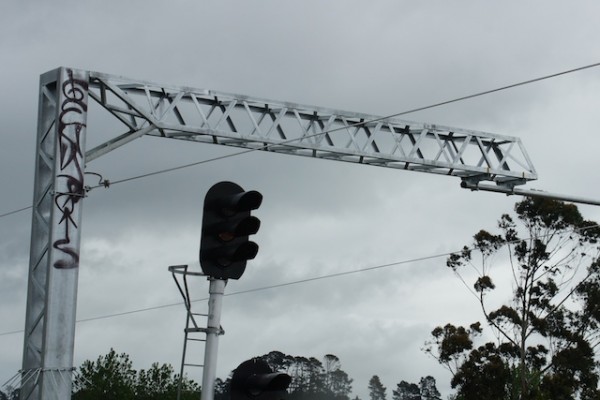
AUCKLAND ELECTRIC TRAINS; The first sign of traction
The 25KV power system, currently used on the North Island Main Trunk line between Hamilton and Palmerston North will also be used for Auckland.
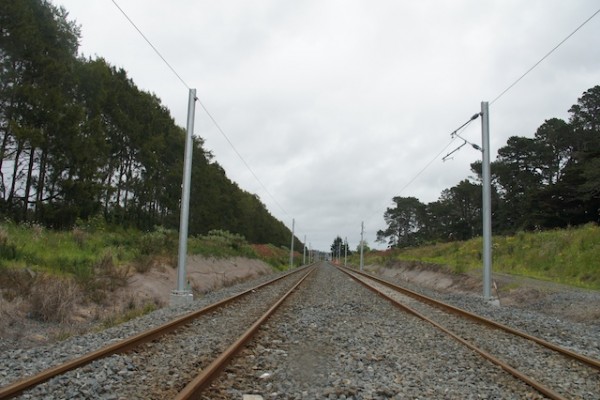
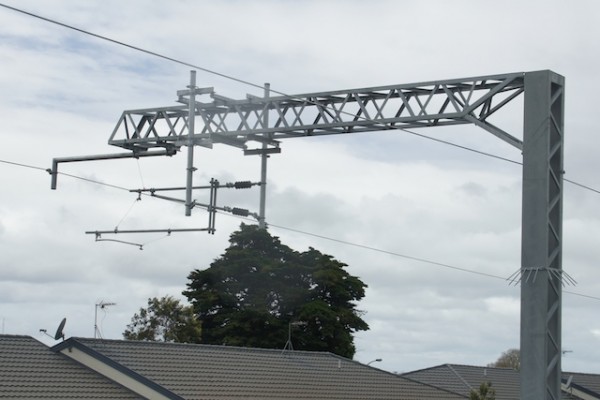
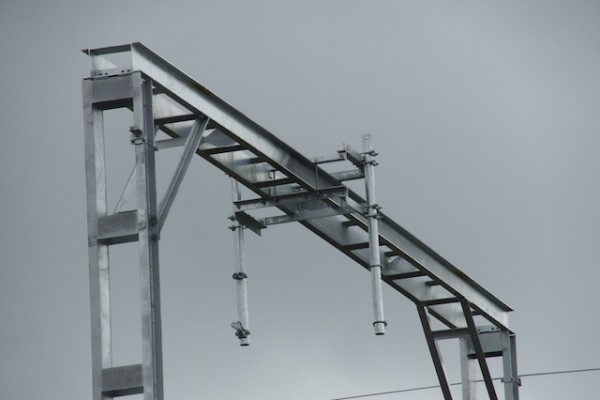
3500 masts and portals are being placed on the Auckland rail network and the traction has appeared around Ranui and Swanson as shown in my photos.
Auckland’s $1b rail electrification contract was awarded to a consortium of New Zealand’s Hawkins Infrastructure – which has just finished building Newmarket Station – and Australia’s Laing O’Rourke. They are building the masts, portals and wires.
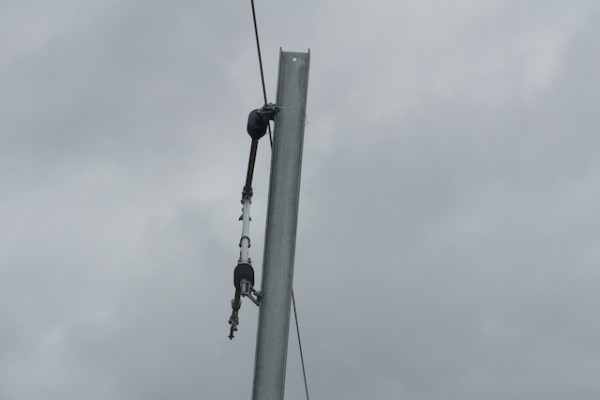
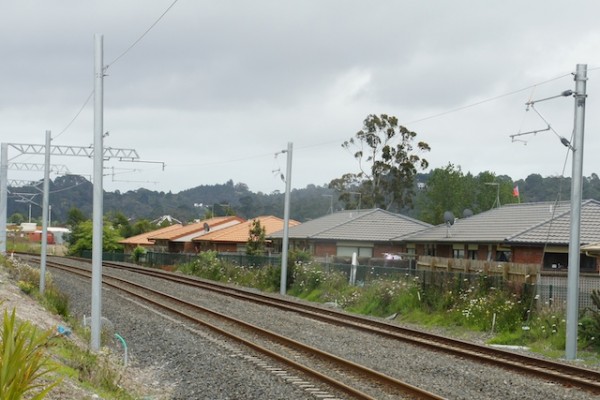
The traction is costing $90m while a modern signalling system compatible with the overhead wires is costing $80m.
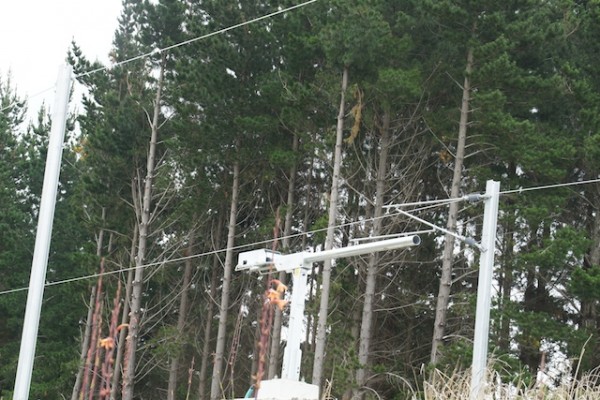
Electrification will extend from Swanson to Papakura and include the Onehunga and Manunkau branch lines. There are six different types of masts and portals covering the 80 km of rail corridor.
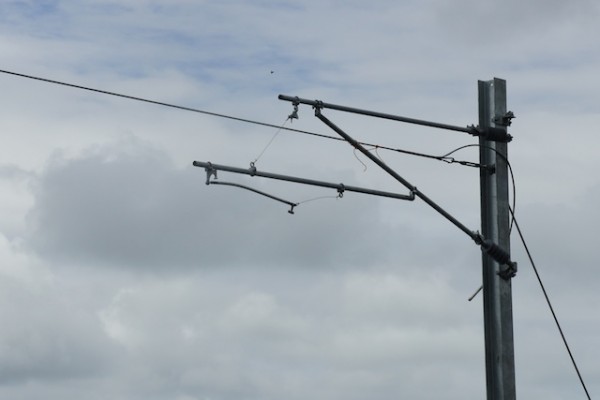
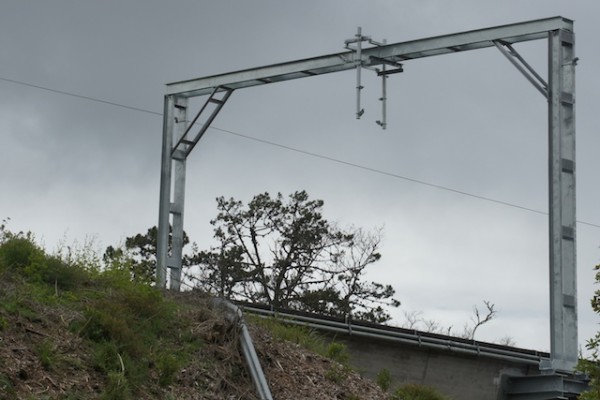
The system will be powered from the national grid at Penrose and Southdown. Both will be independent and will on their own be able to provide enough power to run the entire system.
There will also be six substations around the rail network, and the power needed to run the trains is estimated to be less than 1% of Auckland’s current capacity.
And when it’s all over this is how it’s imagined it will look:
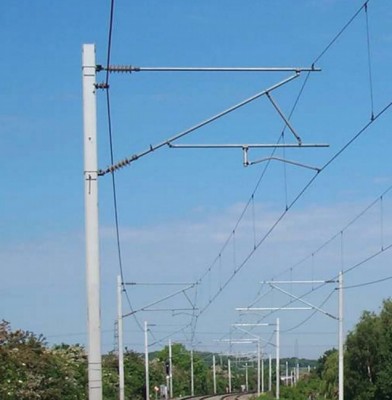
How the wires will look when finished | KiwiRail graphic
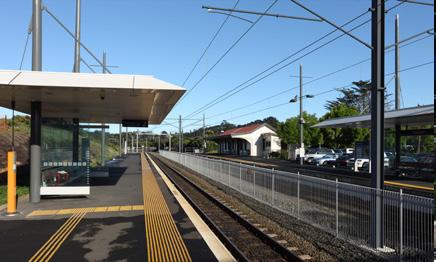
How Swanson may look with the electric wires | Kiwirail image











19 Comments
So far only the earth wire has been erected. There must be more than six types of masts. Mast heights generally vary between 6m and 9m. Then there are variations on these lengths for special sites. Also there are different lengths of gantries etc. etc. There is a big variation in masts.
great to see them working already on the masts and catenaries. I can not wait until the CAF units are here in NZ.
Nice to see the graffiti “artists” out as usual…..Wankers.
Other than than that, great to see the work progressing.
Anthony - I’ve been surprised by how little of them have actually been tagged, most masts have been left alone and the ones that were done tended to be when they were on the ground before they were put up. In the example of the first photo, the gantries have now had the spikes attached to stop people being able to climb them (you can see at the bottom left of the image)
Umm, if the new EMU’s replace the existing diesel trains, but electrification only extends between Swanson and Papakura, how are services to be provided West of Swanson and south of Papakura?
Some of the existing DMU’s will run as shuttles beyond the electrified network.
Yeah, I know. Its sub-optimal. But apparently it is not economical or affordable to electrify further.
Would they refurbish the existing EMU’s then? like what Wellington is doing?
Anthony, we don’t have EMUs in Auckland (yet), we have DMUs. I havn’t heard of any plans to refurbish the few DMUs that would be required, rather than pick the eyes out of the current fleet and use only the best. That will probably see the ADK fleet scrapped and only the ADLs used, which were refurbished not that long ago - in railway terms. The Wellington Ganz units are getting their first refurbishment since they were bought about 40 years ago.
Make that thirty years ago.
30 years. That’s not bad. How many 30 year old buses are there still running in PT?
Evan - The ADK’s will be gone and the plan is to only keep 4 of the 10 ADL’s for service out past the wires.
It had been suggested a while ago that they would refurb the ADL’s left in service to give them another 10 or so years of service but we haven’t heard anything about that and probably won’t till around 2015 I assume
Whoops, I always have used the term EMU’s when talking about Commuter services, jeez, is there any Western cities that still has DMU services for a city of 1.4 million? -_-’
Glasgow still has some urban lines that are not electrified. Not quite a population of 1.4 million, but a substantial urban rail network in the UK none the less.
The Gospel Oak to Barking (GOBLIN) line is still diesel worked albeit with the new Class 172 dmus.
As Robincole says - The Ganz Mavags were put into service in 1982 / 1983 - not 40 years ago more like 28 - 29 years ago. Also they were all refurbished in 1995 to 1998 to the tune of over $500K in 1995 dollars each which was funded by GWRC’s predecessor through Tranz Rail
When the Ganz Mavags were purchased I recall the order was to include about eighty new carriages for the Auckland suburban service but Muldoon scrapped the order because he said Aucklanders didn’t use trains!!
Wonder why?
put the rates up 50% in Pukekohe take our money and give us nothing back in the way of rail aye…
Thanks Len,
“put the rates up 50% in Pukekohe take our money and give us nothing back in the way of rail aye…”
Yeah, because those decisions were SO made by Len Brown (or even Auckland Council).
Where do you get the idea that rates are going up 50% in Pukekohe? The suggestion when it was announced was that the average rates bill in the Franklin district for residential property would decrease by over 7% while the rural properties would decrease by almost 19%